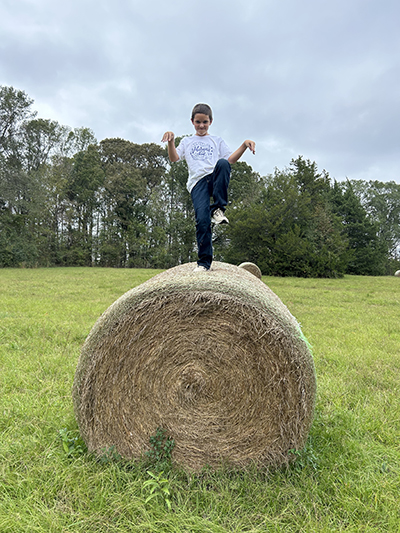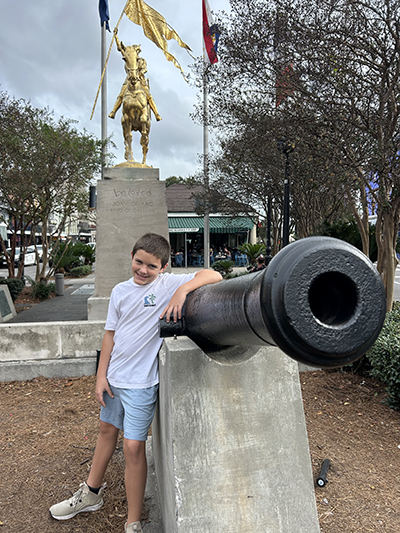It’s rare to find things that exceed your expectations, but Mississippi’s Windsor Ruins, one of Mississippi’s most iconic places, did that for me and step-son Cohen.
Last Friday, after Cohen’s Veterans’ Day program at Vardaman, he and I embarked on an adventure that took us to several historic spots across the state, a football game on the state line, and into my favorite city.

We climbed hay bales, walked through a “Cypress Swamp,” and stood in the pulpit of one of Mississippi’s oldest churches. But my favorite spot was Windsor, a couple miles down the road from Alcorn State University in Lorman.

The historic site features the remains of the Windsor plantation, where twenty-nine enormous columns were left standing after a fire in 1890. Now, there are twenty-three full columns and five partial columns at the site.
As we came around the final turn in the very narrow, curvy road that leads to this Mississippi jewel, I heard Cohen gasp, “Oh, wow!” I looked to my left and had the same reaction.
Windsor Plantation was built for Smith Coffee Daniell II in 1861. The house, one of the largest private residences in the state before the Civil War, was constructed near the town of Bruinsburg, where Union soldiers crossed the Mississippi River to begin their quest to capture Vicksburg.
Daniel, a very successful cotton planter at the time, ironically died only weeks after completing his mansion. Windsor’s basic style was Greek Revival but with added details borrowed from Italianate and Gothic architecture. The house contained 23 rooms, with an above ground basement, two residential floors and an attic. A cupola, from which the Mississippi River could be viewed, was centered on the top of the roof.

The mansion survived the civil war only to be destroyed by accidental fire on Feb. 17, 1890. All was lost except for the massive columns and some ironwork. In 1991, historians discovered a drawing of Windsor sketched in 1863 by a Union soldier.
Cohen and I couldn’t get enough of the majesty of the place that made the history come alive. We stayed there almost an hour imagining what it must have been like in its day.

We would travel on down the road to tour some of Natchez and ultimately make it south of Woodville for the Calhoun Academy playoff game against Wilkinson County.

Afterwards we drove farther south to New Orleans for a fun Saturday of good eats and more history gazing.

I hope to cover some of our other stops such as Rocky Springs and it’s 1837 Methodist church, the iconic golden hand in Port Gibson, the Battle of Raymond and a visit with my parents in future columns, but when I asked Cohen on the ride home Saturday night what was the best part of the trip.

He replied, “That Windsor place.” I concur.